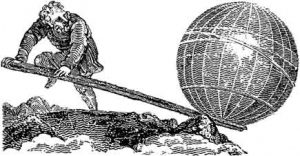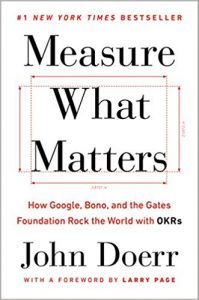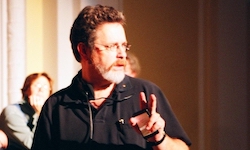 Â Dare to Lead: Brave Work. Tough Conversations. Whole Hearts. Brene Brown
 Dare to Lead: Brave Work. Tough Conversations. Whole Hearts. Brene Brown
I’m a latecomer to Brene Brown’s work. “Dare to Lead†is her most recent book and the first I’ve had the chance to read. My loss and easily correctable.
If you go to Amazon, limit your search just to books, and enter “leadership,†you get over 70,000 results. An evergreen topic to be sure and, as a student of organizations, one I’ve been tuned into for decades. This entry is worth your attention.
Brown starts with a definition of a leader as “anyone who takes responsibility for finding the potential in people and processes, and who has the courage to develop that potential.†Leadership is about how you act.
I found it particularly interesting that she deems curiosity to be an essential and central element of effective leadership. Leadership is a willingness to pick a direction and walk into the unknown. Brown draws on work by Ian Leslie who makes this observation:
Curiosity is unruly. It doesn’t like rules, or, at least, it assumes that all rules are provisional, subject to the laceration of a smart question nobody has yet thought to ask. It disdains the approved pathways, preferring diversions, unplanned excursions, impulsive left turns. In short, curiosity is deviant.
This is a take on leadership that may not mesh with conventional cliches. But Brown builds a persuasive case.
She has practical advice as well. Leadership is a skill that develops with practice; learnable, probably coachable, likely not teachable. Among the many ideas Brown offers are two that I expect to add to my own practice immediately. The first is a call to “paint done,†which asks for more imagination than a more conventional “define what equals done.†I can see how I would tackle that.
The second is a conversational gambit Brown calls “the story I make up…†The premise is that we are always making up stories to account for the behavior we see in others. Those stories are generally wrong on multiple dimensions—Google “fundamental attribution error.†Brown’s insight is that if we share the assumptions we are making and defuse them by acknowledging that they are just stories, we can get to a new, shared, story that will let us make real progress.
This is a book I will be returning to. Brown brings a rare blend of research skills and direct leadership experience to her work. Leadership is always in shorter supply than what the world demands.
 “Give me a lever long enough and a place to stand and I will move the Earth†doesn’t work if you are standing in the wrong place.
“Give me a lever long enough and a place to stand and I will move the Earth†doesn’t work if you are standing in the wrong place. Measure What Matters: How Google, Bono, and the Gates Foundation Rock the World with OKRs
Measure What Matters: How Google, Bono, and the Gates Foundation Rock the World with OKRs While there’s no obligation to explain your process to anyone, working it out for yourself does matter. There’s an observation from Aldo Leopold that’s pertinent:
While there’s no obligation to explain your process to anyone, working it out for yourself does matter. There’s an observation from Aldo Leopold that’s pertinent: I thought of starting this piece with an observation that talking about my process risked spiraling out of control until I realized that feeling was, in fact, a part of my process. The most satisfying part of my work is bringing new things into existence. An essential step is generating enough raw material to ensure that something good and pleasing is likely to emerge
I thought of starting this piece with an observation that talking about my process risked spiraling out of control until I realized that feeling was, in fact, a part of my process. The most satisfying part of my work is bringing new things into existence. An essential step is generating enough raw material to ensure that something good and pleasing is likely to emerge I marvel that the myth of the 5-year plan persists. Without the invention of the spreadsheet it might have already passed away. You would think that the “success†of 5-year plans in the former Soviet Union would have been a better clue. Regardless, managers continue to stress over their ability to predict the future and manage to those predictions.
I marvel that the myth of the 5-year plan persists. Without the invention of the spreadsheet it might have already passed away. You would think that the “success†of 5-year plans in the former Soviet Union would have been a better clue. Regardless, managers continue to stress over their ability to predict the future and manage to those predictions. One of my professors, Warren McFarlan, made an observation about the choice of questions that has stuck with me. He argued that you could either ask questions that would get you published or you could ask questions that mattered.
One of my professors, Warren McFarlan, made an observation about the choice of questions that has stuck with me. He argued that you could either ask questions that would get you published or you could ask questions that mattered. I just gobbled up Charles Stross’s
I just gobbled up Charles Stross’s  The place where technology, organizations, and people come together has been a continuing focus of my work. That interest was birthed in stories of the wonders and dangers of fantastic new inventions. Like a lot of future scientists and engineers I was raised on the stories of Isaac Asimov, Arthur C . Clarke, and Robert Heinlein.
The place where technology, organizations, and people come together has been a continuing focus of my work. That interest was birthed in stories of the wonders and dangers of fantastic new inventions. Like a lot of future scientists and engineers I was raised on the stories of Isaac Asimov, Arthur C . Clarke, and Robert Heinlein.